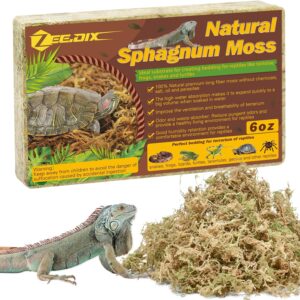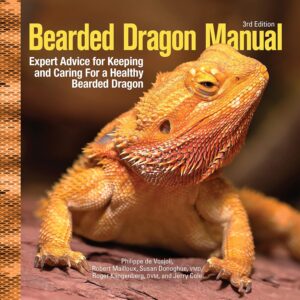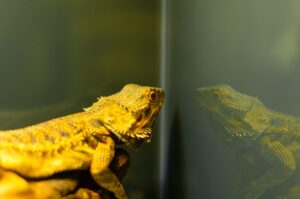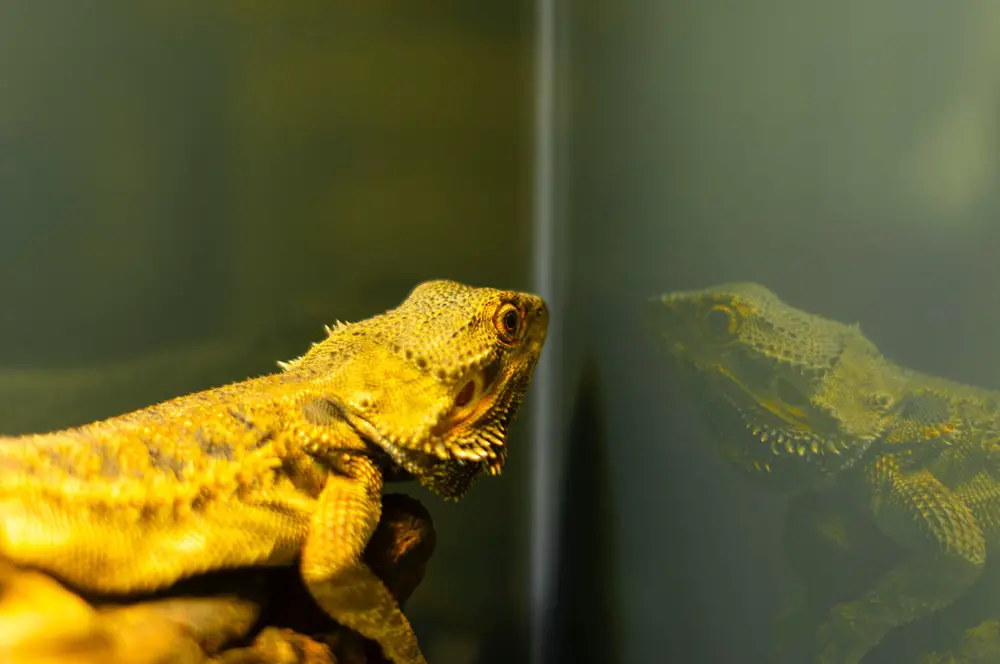How to keep bearded dragon warm at night
how to keep bearded dragon warm at night: Bearded dragons, scientifically known as Pogona, are fascinating reptiles that have gained immense popularity as pets. Originating from the arid regions of Australia, these captivating creatures have become beloved companions among reptile enthusiasts. Renowned for their unique appearance with spiny scales on their throats and the ability to puff them out to resemble a beard, bearded dragons exhibit a range of captivating behaviors and social interactions that make them intriguing additions to any household.
A Brief Overview of Bearded Dragons as Pets
 Bearded dragons are fantastic pets for both beginners and experienced reptile keepers alike. They present an ideal combination of manageable size, gentle temperament, and an interesting array of behaviors.
Bearded dragons are fantastic pets for both beginners and experienced reptile keepers alike. They present an ideal combination of manageable size, gentle temperament, and an interesting array of behaviors.
With proper care and attention, these remarkable creatures can live up to 10-15 years in captivity. One notable aspect of bearded dragon care is their dietary needs.
These omnivorous reptiles have a varied diet that includes leafy greens, vegetables, fruits, and insects. Maintaining a balanced diet is crucial for their overall health and longevity.
Beyond their dietary requirements, bearded dragons need suitable environments that mimic their natural habitats to thrive physically and emotionally. This includes providing them with ample space to explore and bask under proper heat sources that closely replicate the temperature gradients found in the wild.
The Importance of Maintaining Proper Temperature for Their Well-being
Temperature regulation plays a critical role in ensuring the well-being of bearded dragons. As ectothermic creatures or “cold-blooded,” they depend on external heat sources to maintain optimal body temperatures necessary for digestion, metabolism, immune function, and overall physiological processes. Ambient temperatures within their enclosure must be carefully controlled to provide different zones representing cooling areas as well as warm basking spots.
Failure to maintain appropriate temperatures can lead to various health issues, such as metabolic disorders, poor digestion, weakened immune systems, and even lethargy or loss of appetite. During the night, it is essential to create a warm and comfortable environment that allows bearded dragons to rest and conserve their energy effectively.
Failing to adequately address nighttime temperature drops could cause stress or even fatal conditions. Therefore, understanding the natural habitat of these reptiles and employing suitable heating methods are crucial aspects of responsible bearded dragon ownership.
Understanding the Natural Habitat of Bearded Dragons
Native regions and climate conditions
Bearded dragons, scientifically known as Pogona, are native to arid regions of Australia. These reptiles thrive in the hot and dry climates of the Australian deserts, such as the central and western parts of the continent.
The natural habitat provides them with ample sunlight and heat during the day, allowing them to bask on rocks or sand. This environment also experiences significant temperature drops at night due to the absence of cloud cover, leading to cooler temperatures.
Nocturnal temperature fluctuations in their natural environment
 In their natural habitat, bearded dragons experience considerable nocturnal temperature fluctuations. As darkness falls, so does the temperature. It is not uncommon for nighttime temperatures to drop by 10-20 degrees Celsius (18-36 degrees Fahrenheit) compared to daytime temperatures.
In their natural habitat, bearded dragons experience considerable nocturnal temperature fluctuations. As darkness falls, so does the temperature. It is not uncommon for nighttime temperatures to drop by 10-20 degrees Celsius (18-36 degrees Fahrenheit) compared to daytime temperatures.
These variations play a crucial role in their thermoregulation as it allows them to cool down and conserve energy during sleep. During colder months or winter seasons in Australia’s desert regions, nighttime temperatures can plummet even further.
It is not unusual for bearded dragons’ natural environment to reach near-freezing temperatures on some nights. This emphasizes the need for proper warmth provision in captivity since domesticated dragons cannot tolerate extreme cold without consequences.
Understanding these native climate conditions helps us comprehend why maintaining an appropriate thermal environment is paramount when caring for pet bearded dragons. By replicating their natural habitat within our enclosures, we can ensure that they remain healthy and comfortable throughout both day and night cycles.
Creating a Warm and Cozy Enclosure
Selection of an Appropriate Enclosure (Tank or Vivarium)
When it comes to housing your beloved bearded dragon, selecting the right enclosure is of utmost importance. There are two primary options to consider: tanks and vivariums. Tanks are typically made of glass or acrylic, while vivariums often feature a combination of glass and mesh for ventilation purposes.
Both have their advantages, so it ultimately depends on your individual preferences. Tanks provide excellent visibility and insulation due to their solid construction, making it easier to regulate temperatures.
On the other hand, vivariums offer better air circulation with their mesh sides, ensuring proper oxygen flow within the enclosure. If you live in a colder climate or struggle with temperature regulation, a tank may be more suitable as it retains heat more effectively.
Placement Considerations for Optimal Temperature Regulation
Once you have chosen the type of enclosure, where you place it within your home can greatly impact temperature regulation for your bearded dragon. During the day, avoid positioning the enclosure in direct sunlight as this can cause excessively high temperatures which may be harmful to your pet’s health. Additionally, direct sunlight can create hot spots and uneven heating within the enclosure.
Drafts are another factor to consider when choosing the ideal location for your dragon’s home. Avoid placing the enclosure near windows or doors that are frequently opened as drafts can cause fluctuations in temperature which may stress out your pet.
Instead, opt for a relatively quiet area away from high traffic zones where they can rest undisturbed during daytime hours. For nighttime placement, choose an area that is quiet and undisturbed as bearded dragons require uninterrupted sleep just like humans do.
Exposure to excess noise or movement during their resting hours can cause stress and affect their overall well-being. Creating a peaceful environment will promote healthy sleep patterns and ensure your reptilian friend wakes up refreshed and ready for the day ahead.
By carefully considering enclosure selection and placement, you can provide your bearded dragon with a warm and cozy habitat that mimics their natural environment, promoting their overall health and happiness. (Note: The above information is intended as general guidance. Be sure to research specific needs for your bearded dragon species as temperature requirements may vary slightly.)
Primary Heat Source: Ceramic Heat Emitters (CHE)
Overview of ceramic heat emitters and their benefits
Ceramic heat emitters (CHEs) are a popular and efficient means to provide warmth for bearded dragons during the night. These devices are designed to radiate infrared heat without emitting any light, ensuring that your pet can enjoy a restful sleep without disruption.
The gentle warmth generated by CHEs mimics the natural nocturnal temperature fluctuations in their native habitats, promoting a comfortable and stress-free environment for your beloved reptile. One of the key advantages of using ceramic heat emitters is their ability to maintain consistent warmth throughout the night.
Unlike other heating options that may fluctuate in intensity or require constant monitoring, CHEs offer a reliable source of steady heat. This aspect is particularly important as bearded dragons rely on external sources of warmth to regulate their body temperature, as they cannot generate heat internally like mammals do.
Emitting infrared heat without light disturbance
Ceramic heat emitters emit infrared (IR) radiation, which is invisible to the human eye but readily sensed by reptiles like bearded dragons due to specialized receptors on their skin. This design ensures that there is no disruption in the natural day-night cycle or disturbance to your pet’s sleep patterns caused by artificial light sources during nighttime hours. By providing only non-luminous heat, ceramic heat emitters create an ideal nocturnal environment that aligns with your bearded dragon’s biological needs.
Another advantage of using ceramic heat emitters is that they do not interfere with the normal behavior and activity patterns of these fascinating creatures. This means you can observe your pet’s natural behaviors such as exploring its enclosure or basking under its daytime UVB lighting without any disruptions caused by excessive brightness during nighttime hours.
Proper installation and positioning techniques for CHEs
 Installing and positioning ceramic heat emitters correctly is crucial to ensure their effectiveness in keeping your bearded dragon warm at night. It is recommended to place the CHE on top of the enclosure, ideally secured with a heat-resistant fixture or clamp, ensuring that there is no risk of it falling into the enclosure and causing harm to your pet. Consider the size and dimensions of your enclosure when selecting an appropriate wattage for your ceramic heat emitter; larger enclosures may require higher wattage to achieve the desired temperature.
Installing and positioning ceramic heat emitters correctly is crucial to ensure their effectiveness in keeping your bearded dragon warm at night. It is recommended to place the CHE on top of the enclosure, ideally secured with a heat-resistant fixture or clamp, ensuring that there is no risk of it falling into the enclosure and causing harm to your pet. Consider the size and dimensions of your enclosure when selecting an appropriate wattage for your ceramic heat emitter; larger enclosures may require higher wattage to achieve the desired temperature.
Positioning the CHE at one end of the enclosure allows for a thermal gradient, creating a warm area while leaving space for cooler zones. This setup mimics natural conditions where bearded dragons can choose their preferred temperature by moving between different areas of their habitat.
Regularly monitor the temperature inside the enclosure using reliable thermometers placed at different heights to ensure consistent warmth throughout. Remember, it’s crucial to make sure that there are no obstructions or objects in direct contact with the ceramic heat emitter that could cause damage or pose a fire hazard.
Additionally, maintain appropriate distance between the CHE and any bedding material or flammable substrates within the enclosure. By implementing these proper installation and positioning techniques, you can maximize safety while providing optimal warmth for your bearded dragon during those essential night hours of rest and rejuvenation.
Secondary Heat Source: Under Tank Heaters (UTH)
Introduction to under tank heaters as supplemental heat sources
Under tank heaters (UTHs) are a popular choice for providing supplemental heat to keep your bearded dragon warm at night. These heaters consist of a thin electric heating pad that adheres to the underside of the tank or vivarium.
Unlike ceramic heat emitters, UTHs emit gentle and consistent warmth from beneath the enclosure floor, mimicking the natural warmth absorbed by bearded dragons from rocks in their native habitat. UTHs are particularly beneficial during cooler nights or in colder climates where additional heat is required to maintain optimal temperatures within the enclosure.
Providing localized warmth from beneath the enclosure floor
One of the advantages of using under tank heaters is that they provide localized warmth directly beneath specific areas within the enclosure. This allows your bearded dragon to regulate its body temperature by choosing whether to bask directly above the heater or move away to a cooler area within their habitat. The ability for your reptilian friend to self-regulate its temperature is crucial for maintaining overall wellbeing and preventing potential health issues caused by extreme temperatures.
Simulating the warmth absorbed from rocks in their natural habitat
In their natural habitat, bearded dragons spend much of their time basking on rocks, absorbing radiant heat from these sun-warmed surfaces. Under tank heaters simulate this natural behavior by creating a warm surface for your pet lizard to rest upon, ensuring they can properly digest food and carry out essential bodily functions during nighttime hours. By providing a source of gentle bottom-up warmth, UTHs offer comfort and mimic natural conditions, which can have a positive impact on your bearded dragon’s overall health and behavior.
Installation guidelines and precautions when using UTHs
When installing an under tank heater, it’s crucial to follow the manufacturer’s instructions carefully to ensure proper functionality and safety. Firstly, make sure the UTH is the appropriate size for your enclosure, ensuring it covers only a portion of the tank floor to allow for thermal gradient variation.
Clean the enclosure floor thoroughly before applying the adhesive side of the heater, ensuring it adheres securely without any wrinkles or air bubbles that may affect heat distribution. To protect your bearded dragon from direct contact with the UTH and prevent potential burns, always use a layer of insulation between the heating pad and enclosure floor.
This can be achieved using reptile-safe materials such as cork tiles or non-adhesive shelf liners. It’s essential to regularly monitor temperatures with a reliable thermometer to ensure your bearded dragon’s comfort and safety, as improper use of under tank heaters can lead to overheating or inadequate warmth.
Remember that under tank heaters should only be used as a supplemental heat source alongside other appropriate heating elements like ceramic heat emitters or basking bulbs. The combination of these various sources will allow you to create a well-regulated temperature gradient within your bearded dragon’s enclosure, offering them an environment that closely resembles their natural habitat while keeping them warm and content throughout the night.
Thermostat Control for Temperature Regulation
Importance of using thermostats to maintain desired temperatures
Maintaining the appropriate temperature is crucial for the health and well-being of your bearded dragon, especially during the night when they rely on external heat sources to stay warm. This is where thermostats play a vital role. A thermostat is a device that allows you to regulate and control the temperature within your dragon’s enclosure, ensuring it remains within the optimal range.
By using a thermostat, you can prevent overheating or chilling, which can have detrimental effects on your pet’s health. Thermostats provide an added layer of safety by preventing extreme temperature fluctuations.
They help create a stable and consistent environment by automatically adjusting the heat output from your primary and secondary heat sources based on the set temperature. This ensures that your bearded dragon doesn’t experience sudden drops or spikes in temperature throughout the night.
Explanation on how thermostats work with heat sources
Thermostats work in conjunction with heat sources such as ceramic heat emitters (CHEs) and under tank heaters (UTHs) to regulate the temperature in your bearded dragon’s enclosure. These devices monitor the current temperature and compare it with the desired set temperature that you input into the thermostat.
When using a CHE as the primary heat source, for example, you would connect it to your thermostat via its power cord. The thermostat then controls whether to turn on or off power supply to this emitter based on whether it needs to raise or lower the ambient temperature inside the enclosure.
Similarly, if you are using UTHs as supplemental heat sources, they can also be connected through thermostats. The thermostat will activate or deactivate these heaters based on real-time readings from its built-in sensor.
Overall, by employing thermostatic control in combination with appropriate heating devices, you can ensure that your bearded dragon enjoys a well-regulated and comfortable environment throughout the night. This helps mimic their natural habitat and promotes their overall health and happiness.
Additional Insulation Methods
Use of reptile-safe insulation materials to retain heat
To ensure optimum warmth for your bearded dragon during the night, it’s crucial to consider using reptile-safe insulation materials within their enclosure. These materials help trap and retain heat, creating a cozy environment for your scaly friend. When choosing insulation, prioritize safety and avoid using any toxic or harmful substances that could potentially harm your pet.
Reptile-specific insulating materials such as cork bark, expanded polystyrene (EPS), or foam boards are excellent options that provide effective insulation while maintaining a safe living space for your bearded dragon. Cork bark is an ideal choice for both its insulating properties and natural aesthetic appeal.
It can be used as background decorations or as platforms within the enclosure to create temperature-regulated areas. The porous nature of cork bark helps trap warmth and distribute it evenly throughout the enclosure, mimicking the effect of rocks found in a bearded dragon’s natural habitat.
Background decorations with insulating properties
In addition to reptile-safe insulation materials, incorporating background decorations with insulating properties can further enhance the thermal regulation within your bearded dragon’s enclosure. Opt for items like foam backgrounds or textured cork tiles that not only provide visual appeal but also act as an extra layer of insulation against temperature fluctuations.
Foam backgrounds made specifically for reptile enclosures offer excellent heat retention abilities due to their structure and composition. They effectively insulate the walls of the tank while providing an aesthetically pleasing backdrop that mimics a natural habitat.
Cork tiles are another fantastic option that not only adds texture but also assists in maintaining a stable temperature gradient within the enclosure. These tiles can be affixed to the sides or back wall of the tank using non-toxic adhesives, creating an additional layer of insulation that helps conserve heat during the night.

Creating hideouts with insulating materials like cork bark or reptile caves
To provide your bearded dragon with a sense of security and extra warmth during the night, consider incorporating hideouts made from insulating materials such as cork bark or reptile caves. These sheltered areas offer a cozy retreat for your pet, mimicking natural hiding spots commonly found in their native habitats.
Cork bark, besides its insulating properties mentioned earlier, can be fashioned into impressive hideouts by carving out openings and chambers. This allows your bearded dragon to seek refuge within these structures, feeling safe and warm even when the ambient temperature drops during night-time.
Reptile caves specifically designed for bearded dragons also offer a convenient option for creating insulated hiding places. These caves are typically crafted from non-toxic materials and provide a cozy space where your pet can curl up and rest comfortably while benefiting from the added warmth trapped within their shelter.
By utilizing reptile-safe insulation materials, incorporating background decorations with insulating properties, and creating hideouts with materials like cork bark or reptile caves, you can significantly enhance the thermal regulation within your bearded dragon’s enclosure. These additional insulation methods contribute to maintaining an optimal nighttime temperature for your beloved reptilian companion’s well-being.
Monitoring Temperature
Utilizing Thermometers: How to Keep Bearded Dragon Warm at Night
To ensure the optimal temperature for your bearded dragon during the night, it is imperative to monitor the enclosure’s temperature accurately. One of the most common and reliable tools for temperature monitoring is a quality thermometer.
Digital thermometers with remote sensors are ideal as they provide real-time temperature readings from multiple locations within the enclosure. Place one sensor at the basking spot and another near the cool end of the tank to get a comprehensive understanding of the temperature gradient.
Thermostats: A Crucial Control Mechanism
While thermometers offer valuable insights into your bearded dragon’s habitat, using a thermostat takes temperature regulation to another level. Thermostats allow precise control over heat sources by automatically adjusting their output based on pre-set desired temperatures.
By connecting your primary heat source, such as a ceramic heat emitter or heat pad, to a thermostat, you can maintain a stable and safe night-time environment for your pet. Remember to calibrate and test your thermostat periodically to ensure accurate readings and reliable performance.
Regular Temperature Checks
Once you have set up thermometers and thermostats in your bearded dragon’s enclosure, it is essential to perform regular checks throughout both day and night. Regular monitoring enables you to identify any fluctuations or malfunctions promptly. Check temperatures at different times during both day and night to ensure consistency and stability in maintaining an appropriate thermal gradient in which your bearded dragon can thrive comfortably.
To Sum Up How to Keep Bearded Dragon Warm at Night
Keeping your bearded dragon warm at night is crucial for their overall well-being. By replicating their natural habitat through appropriate heating methods such as ceramic heat emitters (CHEs) and under tank heaters (UTHs), you create a cozy environment that ensures their comfort during nocturnal hours.
It is of utmost importance to monitor the temperature consistently using thermometers and employ thermostats to maintain a stable and safe environment. By implementing these measures and regularly checking the temperatures, you provide your bearded dragon with the optimal conditions they need to thrive.
Remember, by investing time and effort into understanding and fulfilling your bearded dragon’s thermal needs, you are fostering a harmonious environment for their growth and development. As responsible pet owners, we have the opportunity to create a haven where our scaly companions can live happily while experiencing natural warmth throughout their nights.
Further Reading:
- Carolina Custom Cages Terrarium Review
- 8 Best Basking Rocks for Beardie: What Is the Best Choice?
- 10 Best Thermometers for Beardie: How to Choose the Best One?
- 5 Best Beardie Lighting Setups for Beardie Lovers
- 9 Best Heat Lamps for Beardie: Natural Habitat Provided



